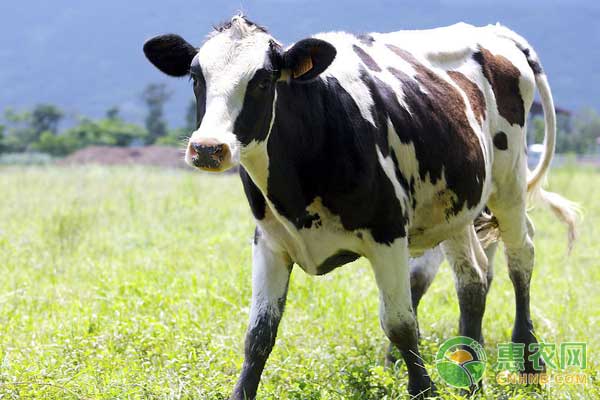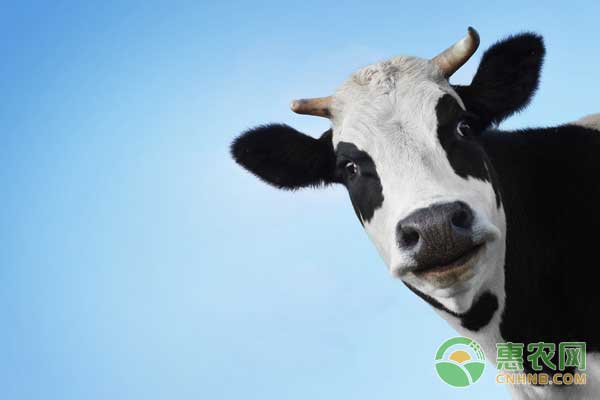With the improvement of people's living water products, the demand for dairy products is also growing. The market prospects for dairy products are good. Many newcomers want to engage in the dairy farming industry. How can high-yield dairy cows improve milk production and milk quality? First, the coarse and coarse materials mix and match ratio technology The ratio of cow's fine and coarse materials must meet the basic physiological characteristics of cows as ruminants, even if the peak of lactation must adhere to the principle of mixed feed. Generally, the proportion of crude fiber feed (artificial forage, weed grass, grass crop straw, etc.) in non-lactating and dry lactation should be 50%~60%, and fiber feed at the peak of lactation should account for 40%~50%. Appropriately increase the amount of concentrate feed (50%~60%), which is beneficial to the full digestion, absorption and conversion of dairy cows, and does not produce nutritional metabolic (digestive) diseases. Second, the nutritional balance control of the diet Dairy cattle breeding should be prepared according to the feeding standards of the cows at each stage of growth, especially to meet the key nutrient requirements of the lactation stage. The supply of dry matter must be sufficient, among which “energy substances, crude protein, crude fiber, mineral micro, vitamins†Must be sufficient to add, accurate ratio; the maximum amount of concentrate (food, beans, animal feed, etc.) should not exceed 60%, should be based on crude fiber feed, even if the proportion of concentrate in the peak of lactation is also Can only be controlled at 50%~60%, prohibiting more than 60%, so as not to increase the burden on the liver and kidney of dairy cows, cause metabolic diseases (acid-base poisoning), reproductive disorders, leg and foot disease, etc.; 24h uninterrupted supply of adequate cleaning Drinking water, it is forbidden to drink poor quality drinking water that does not meet the standard of safe drinking water. Third, reduce the negative balance of nutrition It is proved by practice that high-yield dairy cows need to minimize the negative balance of nutrition and ensure the normal function of rumen, in order to maintain the health of dairy cows and obtain stable and high yield. Therefore, in order to minimize the negative balance of energy, a certain amount of rumen protein (protective amino acid, full fat puffed soybean, whole cottonseed) and rumen fat (vegetable oil, fatty acid calcium, calcium palmitate, etc.) can be added to the diet. It is advisable to prohibit the use of animal rumen protein and animal fats in the amount of 2% to 3%, which may cause rumen dysfunction in dairy cows. Fourth, the balanced supply of trace elements In practice, trace elements (mine micro, vitamins) are used in small amounts, but the effect is huge, especially when large-scale elements are cultured in livestock and poultry. The essential trace elements of animals include: 0.8% Na2SO4 (sodium sulfate) commonly used in Na salt can improve the milk production and feed conversion utilization rate; adding KCl (potassium chloride) in the high temperature season can effectively alleviate heat stress and maintain normal physiological and metabolic functions of dairy cows. In the whole house feeding and closed farming mode, the mineral micro-materials necessary for animals such as Se (selenium), S (sulfur), Ca (calcium), P (phosphorus), Cu (copper), and Zn (zinc) are easy. Lack, free-range and semi-distributed cows also have regional lack of certain mineral micro-elements. Therefore, it is necessary to pay attention to the process detection and timely assessment of whether the content of mineral elements in dairy cows is seriously lacking. If there is a lack, it needs to be replenished in time. In order to avoid related nutrient-deficient diseases; VE, VA two vitamins are indispensable in the high-intensity breeding of dairy cows. The proper addition of these two vitamins in the dairy cow diet during breeding period can effectively reduce the incidence of reproductive disorders; milk lactation and After the start of the lactation mechanism, the demand for calcium and phosphorus substances is large. At this time, the amount of VA and VD vitamins in the diet (constant 1.5~3 times) can be increased to promote the absorption and transfer of calcium and phosphorus substances in the cow body. Chemical utilization can effectively prevent obstetric diseases such as postpartum calcium deficiency and postpartum sputum. 5. Reasonable application of feed additives In order to prevent certain diseases, promote weight gain, increase milk production, increase production and increase income, large-scale dairy cattle breeding production often requires the use of some feed additives, mainly: (1) Buffer: mainly baking soda (add 1.5%), magnesium oxide (addition amount 0.6%~0.8%), used to improve the cow's over-feeding to promote digestion, increase milk production, enrich the milk nutrients, and can regulate and improve the rumen microbial fermentation decomposition effect, reduce rumen disease Incidence. (2) Propylene glycol (propylene glycol, ethylene propylene glycol, isopropyl glycol): When cows have a common disease "ketosis", they can be added to the diet or directly administered with propylene glycol, which can quickly relieve symptoms and cure. (3) Heterotopic acids (isovalerate, isobutyric acid, isohexanoic acid): Targeted addition of ectopic acids can significantly increase milk production, milk fat percentage and feed conversion utilization. (4) Zeolite and rare earth: It is proved by practice that the addition of 4% to 5% of the zeolite component or the diet with the appropriate amount of rare earth (40~45mg/kg) can increase the milk production by 8%~10%. 6. Fine management during lactation 1. Short-term superior feeding promotes lactation to ensure that cows have sufficient feeding and ruminating time, and try to eliminate the adverse effects such as noise, violent expulsion, environmental discomfort (contamination, high temperature and high humidity, low temperature and high humidity, poor ventilation, etc.). Good health and welfare, so as to achieve the best production performance, high-yield cows at this stage feed 5 to 6 times a day to ensure that their free eating and ruminant rest time is not less than 20h. 2, prolong the dry period of modern high-yield dairy cows during the lactation period, the feed intake is large, the rumen is in a negative state for a long time, need to be effectively relieved during the dry period to maintain the normal function of the rumen, otherwise it will cause rumen disorder, Will affect the yield of the next lactation and the health of the cow. Therefore, proper extension of milking time and manual control of the dry period of dairy cows to more than 60 days are beneficial to the rapid return of normal rumen function to dairy cows. 3. A sufficient supply of drinking water is the basic Material for maintaining animal physiology and metabolism. The daily water requirement of high-yield dairy cows is about 120~145m. In the hot summer, the demand is larger. Modern large-scale dairy farms should be equipped with automatic drinking fountains to ensure full Sufficient clean drinking water is provided continuously in the daytime; when the summer temperature is too high, the amount of baking soda (0.5%~1%) can be added to the targeted drinking water to relieve heat stress. The water temperature is regulated at 15~18°C, and the autumn and winter are prevented. water freezes and the water temperature is too low, when it is necessary to artificially heated to 18 ~ 20 ℃ when the water temperature is below 10 ℃, full attention to strengthening water quality monitoring to ensure compliance with safety standards for drinking water, which can lead to prevent gastrointestinal diseases. 4, reasonable cluster feeding different diets modern high-yielding dairy cows during lactation nutritional needs are not the same, the need to rationalize the current feed Feeding Amount diet and nutrient concentration based on the amount of milk, if they do not mixed feeding group is difficult to grasp the deployment of diet and feeding Standards, therefore, the lactating period, the dry period, and the perinatal period should be scientifically grouped according to the same period and the amount of milk, and the primiparous cows (the first child) should be separated from the cows. which is conducive to carry out feeding management, cows play the best performance. These are the techniques of breeding cows efficient, if you want to know more please pay attention to dairy farming benefits of agricultural technology school Oh! Changzhou Ziying Metal Products Co., Ltd , https://www.ziyingmetal.com

How to efficiently raise cows? Technical points of dairy farming